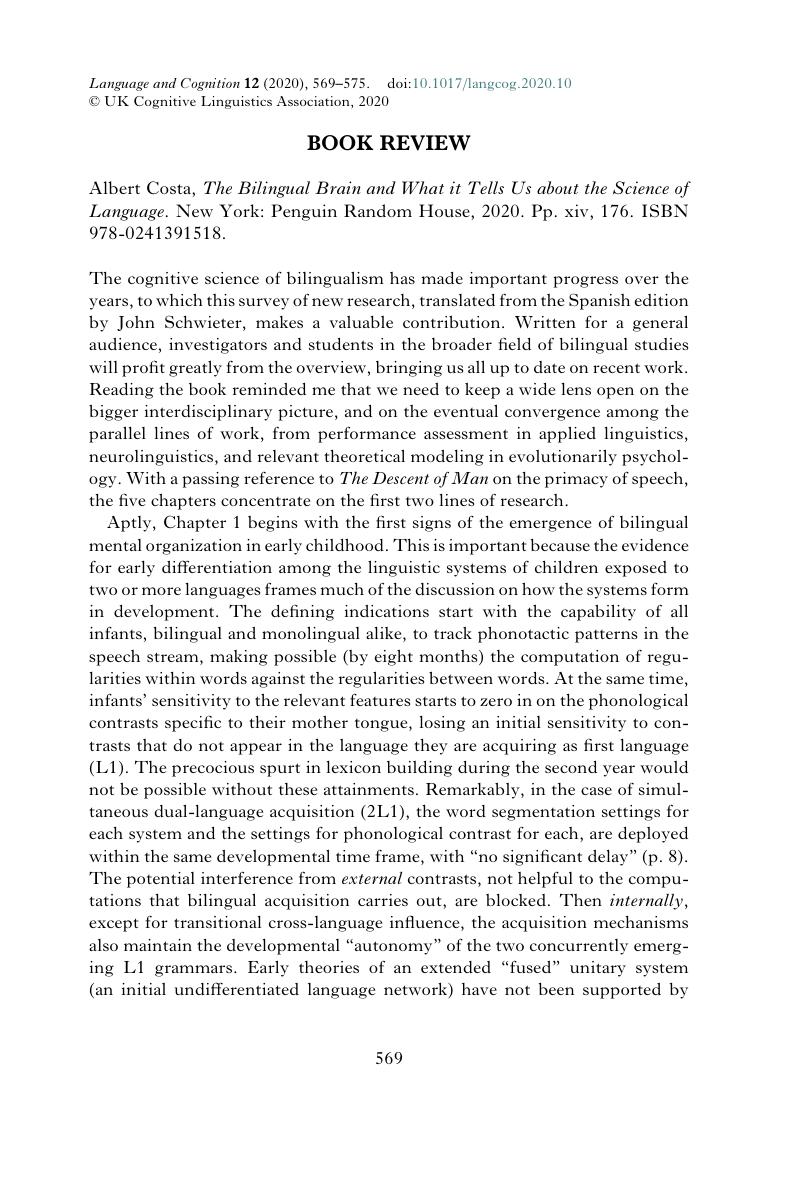No CrossRef data available.
Article contents
Albert Costa, The Bilingual Brain and What it Tells Us about the Science of Language. New York: Penguin Random House, 2020. Pp. xiv, 176. ISBN 978-0241391518.
Review products
Albert Costa, The Bilingual Brain and What it Tells Us about the Science of Language. New York: Penguin Random House, 2020. Pp. xiv, 176. ISBN 978-0241391518.
Published online by Cambridge University Press: 06 April 2020
Abstract
An abstract is not available for this content so a preview has been provided. Please use the Get access link above for information on how to access this content.

Information
- Type
- Book Review
- Information
- Copyright
- © UK Cognitive Linguistics Association, 2020
References
REFERENCES
Kovács, A. & Mehler, J. (2009). Cognitive gains in 7-month-old bilingual infants. PNAS 106, 6556–6560.CrossRefGoogle ScholarPubMed
Kovelman, I., Baker, S. & Petitto, L. (2008). Bilingual and monolingual brains compared: a functional magnetic resonance imaging investigation of syntactic processing and a possible ‘neural signature’ of bilingualism. Journal of Cognitive Neuroscience 20, 153–169.CrossRefGoogle Scholar
Le Pichon, E., de Swart, H., Vorstman, J. & van den Bergh, H. (2010). Influence of the context of learning a language on the strategic competence of children. International Journal of Bilingualism 14, 447–465.CrossRefGoogle Scholar
Paradis, M. (2004). A neurolinguistic theory of bilingualism. Amsterdam: John Benjamins.CrossRefGoogle Scholar
Sebastián-Gallés, N., Albareda-Castellot, B., Weikum, W. & Werker, J. (2012). A bilingual advantage in visual language discrimination in infancy. Psychological Science 23, 994–999.CrossRefGoogle ScholarPubMed


